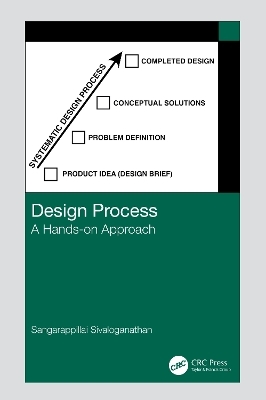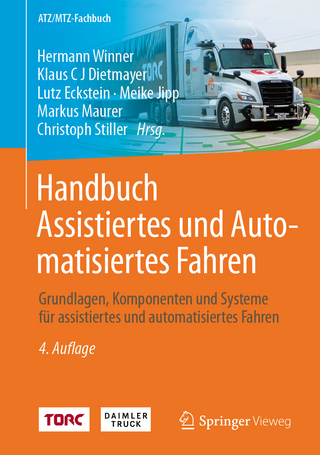
Design Process
CRC Press (Verlag)
978-1-032-56054-0 (ISBN)
This book introduces the systematic design process for product and engineering design projects by adopting a design model and the use of several design methods. Starting with a product idea normally outlined by the senior management as a design brief, it guides to plan the design process, define the problem, generate and choose a near-optimal or optimal solution, and complete the embodiment, all under a systematic design process model. The main strength of this book is its provision of several worked examples in the use of several design methods at all stages of the design process.
This book explains how to:
Start with the design brief and define the problem by eliciting and refining stakeholder requirements.
Establish the functional representation of the product as a function tree or function structure.
Create conceptual solutions using 12 different conceptual design methods.
Evaluate and prove that the proposed conceptual solutions are of high grade before choosing one for further development, using the decision matrix method and Pugh’s controlled convergence method.
Use the embodiment design method by Pahl and Beitz to develop the embodiment design for the chosen concept.
It is primarily written for senior undergraduate and graduate students in the fields of industrial engineering, production engineering, manufacturing engineering, mechanical engineering, and aerospace engineering.
The e-book+ version of the book, Design Process: A Hands-on Approach, complements the other versions of the book. This ebook+ version provides extensive and elaborative details about the topic to improve the overall experience of the readers. The videos that are recorded and embedded in the appropriate sections of the book outline and explicate the key features of this book, which include an overview of this book and covering critical and advanced topics at the beginning of Chapter 1 to enrich the user experience.
Sangarappillai Sivaloganathan was a curriculum-based engineer, like most of the contemporary engineering graduates. He graduated as a mechanical engineer from the University of Sri Lanka in 1976. The young man who until his mid-teens spent his life with bulls, bullock carts and a rackety bicycle went for training in the casting, forging, machining and millwright shops of the Sri Lankan Railways. Following this, after working in the Sri Lankan Cement Industry, Siva joined the University of Aston in Birmingham and obtained his Master’s in Production Technology in 1982. Birmingham, which housed a third of the British Industry at that time, had a major impact in Siva’s life. Siva returned to Sri Lanka and became the commissioning engineer and later the operations manager for Lanka Cement Ltd. He Joined City University, London in 1985 and obtained his PhD in Mechanical Engineering 1991. During this time, he joined the activities of the EPSRC Engineering Design Centre and later became the centre’s Senior Research Assistant. He joined Brunel University in 1995 as a faculty member and continued to work there until he moved to the United Arab Emirates University in 2011. During his stay at Brunel University, he has supervised 9 PhDs, published more than 60 papers in reputed journals and conferences, and convened and functioned as chair for two international conferences in Design. He was the founding course director for the Successful MSc program in Advanced Engineering Design. Dr Siva moved to United Arab Emirates University in 2011. As the program coordinator he restructured the struggling Master of Engineering Management program. He teaches Product Development in the program from the time he joined UAEU. He presented his teaching philosophy to the ASEE annual conference in 2014 and got the best paper award in the Engineering Management division.
1. Introduction. 2. Design Process Planning. 3. Establishing Design Brief. 4. Establishing Requirements. 5. Functional Modelling. 6. Need-Metric Matrix. 7. Drawing Specifications. 8. Conceptual Design. 9. Concept Evaluation and Selection. 10. Embodiment Design. 11. Complete Design Projects
| Erscheinungsdatum | 31.08.2024 |
|---|---|
| Zusatzinfo | 146 Tables, black and white; 232 Line drawings, black and white; 53 Halftones, black and white; 285 Illustrations, black and white |
| Verlagsort | London |
| Sprache | englisch |
| Maße | 156 x 234 mm |
| Gewicht | 889 g |
| Themenwelt | Technik ► Fahrzeugbau / Schiffbau |
| Technik ► Luft- / Raumfahrttechnik | |
| Technik ► Maschinenbau | |
| Technik ► Umwelttechnik / Biotechnologie | |
| ISBN-10 | 1-032-56054-1 / 1032560541 |
| ISBN-13 | 978-1-032-56054-0 / 9781032560540 |
| Zustand | Neuware |
| Haben Sie eine Frage zum Produkt? |
aus dem Bereich


